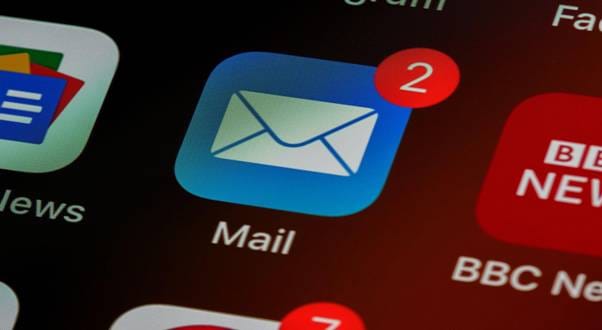Keeping your email subscribers interested and engaged is a tricky game. After all, they’re not captive readers who have no choice but to keep reading your emails. If they’re not interested, they can unsubscribe at any time.
Similarly, once your subscribers have signed up for your mailing list, you don’t have control over how much or how little information they receive from you in the future. They can easily switch off if you send them too many uninteresting emails or fail to reply to something they’ve asked you about.
It might seem like an unfair balance of power, but fortunately, you can do some things to give yourself the best chance of keeping them interested and engaged. In this blog post, we will discuss how you can engage with your email subscribers better and more effectively. So, without further ado, here are nine ways to engage your email subscribers.
1. Take advantage of email marketing tools

Email Marketing tools such as constant contact help you keep your audience engaged, and keep them coming back to your website. Constant contact allows you to send emails every time you receive a new email from your email address.
If a customer clicks on your link and then visits the same page as before, they probably clicked on the old copy of your link instead of the new copy. If someone is interested in a certain article or product, it may be worth sending them an email with a link containing the article or product for free.
This will help keep their eye interested in that article or product even if they don’t buy it. There are many alternatives to Constant Contact in the market to try out such as flodesk, Moosend, Mailchimp, ConvertKit, Omnisend etc.
2. Don’t just promote – give something of value
Marketers have tried to trick people into opening their emails for years. The easiest way to do this is to try to make the email look like it has something to do with the reader’s interests and then sneakily slip in the name of your product or service. While this might have worked in the past, it will not hold up now.
Subscribers are savvy enough to know when they’re being tricked. Instead, give something of value to your readers in every single email you send. It might be an interesting article, a piece of advice they can use in their day-to-day lives, or a short video relevant to their interests.
The idea is that you’re engaging with your readers on a level that isn’t purely monetary. You’re connecting with them so that when it comes time for them to decide whether to buy from you, they’ll remember the helpful emails you’ve sent them in the past.
3. Don’t be afraid to ask for the sale
We are not saying that you should constantly try to sell your product or service in your emails. But, every now and then, it’s a good idea to make a firm ask. For example, if you’re running a sales campaign or trying to raise money for a charitable cause, you should definitely ask people for their support in your emails.
You should also ask your readers to take action to help you grow your business. For example, you can ask readers to sign up for your newsletter, like your Facebook page, or to follow you on Twitter.
Whatever you ask your readers to do, make sure that it’s relevant to their interests, and in line with the type of content they receive from you and when you ask for something, be sure to explain why it’s important and why they should do it.
4. Use social media to find out what your subscribers want

Social media is excellent for understanding how engaged your subscribers are and whether they get the kind of content they want. If your content is generally well-received, you’ll see more and more people liking, sharing, and commenting on what you’re putting out there.
If people aren’t engaging with your content, it’s a sign that your subscribers aren’t getting what they want from your emails. You can use this information to tweak your email campaigns. Change your content, find out what your readers want, and then bring that information back into your emails.
In addition, you can also use Facebook as an alternative way of engaging with your audience and get traffic through their social networking accounts by using Facebook promotions and other social media marketing tools such as sharing pins; using Twitter; and promoting yourself on other social media platforms such as Instagram
5. Send emails that show you care
Your readers probably don’t expect you to engage with them in a friendly, personal way. But, if you can show them that you care about their interests, you’ll be ahead of most marketers.
It doesn’t have to be something huge. If a reader mentions that they like a football team in an email, you could respond by saying that you support the same team. If a reader has a question about how to fix a certain problem, you could offer advice that shows that you’ve been in the same situation.
Remember that not every piece of content has to be directly related to your business. If you’re subscribed to a bunch of podcasts, and a reader mentions one as their favorite, you could also jump in and say that you enjoy it. If you can show your readers that you care about them, they’ll appreciate it and be more likely to engage with your content.
6. Communicate only the most relevant information

One of the quickest ways to lose the interest of your readers is to send them the information they aren’t interested in. Unfortunately, this is something that a lot of marketers seem to do.
They send out long, unbroken emails that are full of information that is only loosely related to their business. If your subscribers were interested in everything you do and know about, they would have bought from you already.
If you want to keep people engaged, you have to communicate only the most relevant information. You don’t have to cut out huge chunks of what you do; you just need to be more selective about what you include.
Remember: each piece of information you send out in an email competes for attention. If your email competes with 10 other emails from marketers, there’s a good chance it will be pushed to the bottom of the pile.
7. Be careful with images and don’t over-rely on color
A picture is worth a thousand words, but you’ll overwhelm readers if you overdo it with images. Remember that colored images don’t translate well to black and white when printed.
So, if you send out printed newsletters with images, they might look nothing like when they’re sent as an email, and images can also be distracting. If you have a long block of text, it’s easy for your readers to get distracted by an image and forget what they were reading.
When you use images, ensure they are relevant to your content and easy to ignore if the reader just wants to read the text. However, if you can fit it in without overloading your readers, adding images or videos to your emails can be a great way to break up text-heavy content and keep readers engaged.
Images can also help you to rank better in search results if you use them correctly. But make sure that you don’t just throw any old image into your email. It should be relevant to your content and have a clear purpose. For example, if you’re writing a piece of content related to gardening, you could include an image of a flower that
8. Use plain language and shorter sentences

You might have heard that you should use longer sentences because they’re more engaging. However, research has shown that shorter sentences actually engage readers more and keep them interested.
If you’re trying to reach a general audience, it’s best to use plain language. Avoid jargon and industry-specific language unless it’s absolutely necessary. Don’t try to be overly fancy or poetic with your sentences.
Keep things as simple as possible, and try to avoid using two sentences when one will do. However, if you’re targeting a specific audience, you can use more technical terms. Just make sure you define them clearly so everyone can understand your content.
9. Run an A/B test
You can use an A/B test to see which version is better at getting people to click on your link or whether they actually read it before clicking on it. For example, if someone clicks one version of your link and says, “Oh my God! What are these?” then that person probably won’t click on another copy of your link.
However, if someone sees two versions of your link and says, “Oh my God! That’s my favorite!” they will probably click on both versions, so try using different versions in different circumstances to see which version gets more clicks.
Summing up
Using email for customer engagement is vital for every business. If you are struggling with your email list, you can use the above guidelines to help you. Be sure to test different versions of your content and different versions of your email list so that you are not only giving people what they want but also what they expect.
Author bio (if needed): Cosmas Mwirigi

Cosmas alias Cosii-Riggz is a technology enthusiast and SAAS writer who helps clients understand products by explaining services for businesses. He has been featured in websites such as PV Magazine and Bitcoin Kenya. During his free time, he likes traveling to new places and exploring what’s new on the internet. Contact him on his LinkedIn page or email.





